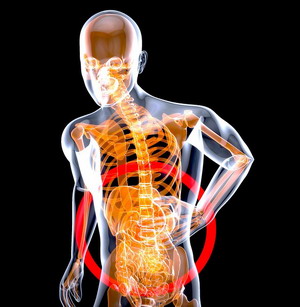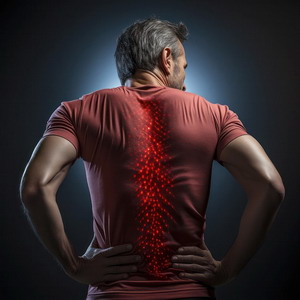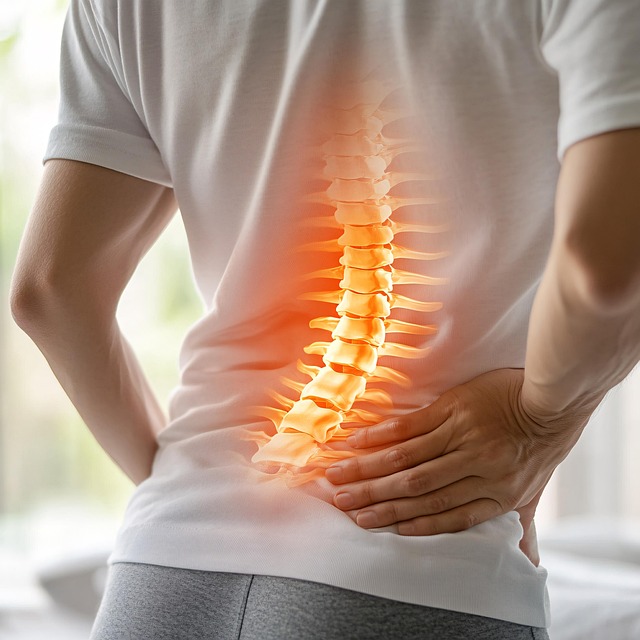I am certain most of you have experienced some part o f your body hurting for no apparent reason. You wake up one morning with a backache, a shoulder ache, or an inability to put weight on your foot, and you frantically try to recall any actions that might have caused the pain, but nothing seems to come to mind. Or my personal favorite – you’re walking along minding your own business, when suddenly, your hip, knee, or foot suddenly stops working without any apparent cause. It is as if the body has simply decided to malfunction. Sometimes the pain resolves in a few minutes or hours, while at other times, it persists for days. What on earth is causing these random bouts of pain? Today, I am eager to delve into the possible reasons behind these sudden and unexplained aches and pains.
f your body hurting for no apparent reason. You wake up one morning with a backache, a shoulder ache, or an inability to put weight on your foot, and you frantically try to recall any actions that might have caused the pain, but nothing seems to come to mind. Or my personal favorite – you’re walking along minding your own business, when suddenly, your hip, knee, or foot suddenly stops working without any apparent cause. It is as if the body has simply decided to malfunction. Sometimes the pain resolves in a few minutes or hours, while at other times, it persists for days. What on earth is causing these random bouts of pain? Today, I am eager to delve into the possible reasons behind these sudden and unexplained aches and pains.
Most of the time, these sudden muscle and/or joint pains  are caused by a loss of proper coordination in the affected area. When we move any joint, several simultaneous events occur. A muscle contracts to pull the joint in the desired direction, while the opposing muscle simultaneously releases. Additionally, numerous stabilizer muscles throughout the body lock down to accommodate the necessary balance adjustments caused by the weight shift in your posture resulting from the initial joint movement. For example, when raising your arm to the side, the muscles in the upper and lower back tighten on the opposite side to prevent your body from falling toward the raised arm. The rotator cuff and neck muscles must hold the shoulder blade in place to prevent shoulder tearing.
are caused by a loss of proper coordination in the affected area. When we move any joint, several simultaneous events occur. A muscle contracts to pull the joint in the desired direction, while the opposing muscle simultaneously releases. Additionally, numerous stabilizer muscles throughout the body lock down to accommodate the necessary balance adjustments caused by the weight shift in your posture resulting from the initial joint movement. For example, when raising your arm to the side, the muscles in the upper and lower back tighten on the opposite side to prevent your body from falling toward the raised arm. The rotator cuff and neck muscles must hold the shoulder blade in place to prevent shoulder tearing.
Let’s consider a simple example. Imagine raising your hand towards your shoulder. As your bicep muscle contrac ts in front of your upper arm, your triceps muscle in the back of your arm must simultaneously relax. If the triceps muscle contracts abruptly, your hand will jolt up and strike you in the face. Conversely, if the triceps muscle resists the bicep, a struggle ensues, potentially damaging either muscle. These phenomena are classic indicators of specific neurological conditions. Coordination is paramount. However, what occurs when this coordination is slightly off? This is where I encounter the majority of unexplained muscle and joint pains.
ts in front of your upper arm, your triceps muscle in the back of your arm must simultaneously relax. If the triceps muscle contracts abruptly, your hand will jolt up and strike you in the face. Conversely, if the triceps muscle resists the bicep, a struggle ensues, potentially damaging either muscle. These phenomena are classic indicators of specific neurological conditions. Coordination is paramount. However, what occurs when this coordination is slightly off? This is where I encounter the majority of unexplained muscle and joint pains.
When coordination is slightly off, a joint might suddenly lock up for no apparent reason, or it might give way, causing your ligaments to bear the brunt of the joint’s weight. This oft en leads to ligament sprains. A significant portion of my work in the office involves resetting these coordination issues. When a joint locks up, a reset provides immediate relief. However, when a joint has given way and a slight ligament sprain has occurred, a reset offers some relief, but the microtears in the ligaments require time to heal. In some cases, when the ligaments are suddenly pulled, they can cause the bones they are attached to to shift out of position. This is where traditional Chiropractic adjustments come into play, as they aim to reposition these bones. Each spinal bone has seven distinct layers of muscles attached to it, making them particularly susceptible to coordination problems, hence the primary focus of Chiropractors on spinal adjustments. However, it’s important to note that every bone and joint in the body has numerous muscles that must be perfectly coordinated. Even skull and rib bones are affected by this issue.
en leads to ligament sprains. A significant portion of my work in the office involves resetting these coordination issues. When a joint locks up, a reset provides immediate relief. However, when a joint has given way and a slight ligament sprain has occurred, a reset offers some relief, but the microtears in the ligaments require time to heal. In some cases, when the ligaments are suddenly pulled, they can cause the bones they are attached to to shift out of position. This is where traditional Chiropractic adjustments come into play, as they aim to reposition these bones. Each spinal bone has seven distinct layers of muscles attached to it, making them particularly susceptible to coordination problems, hence the primary focus of Chiropractors on spinal adjustments. However, it’s important to note that every bone and joint in the body has numerous muscles that must be perfectly coordinated. Even skull and rib bones are affected by this issue.
Okay, so what causes these peculiar, small coordination issues? We’re not referring to any significant brain damage, b ut rather some involvement of the brain. That’s why my adjustments for these challenges often involve the brain. I’ve identified three primary causes for these minor coordination problems: visceral somatic reflexes, adaptive fatigue, and fear posturing. Let’s examine each of these.
ut rather some involvement of the brain. That’s why my adjustments for these challenges often involve the brain. I’ve identified three primary causes for these minor coordination problems: visceral somatic reflexes, adaptive fatigue, and fear posturing. Let’s examine each of these.
I’ve written about viscerosomatic reflexes before. These are triggered by inflammation in an organ, causing a reaction in your muscles. For instance, gallstones or kidney stones can cause painful muscle spasms. Each organ has specific areas on the body’s surface where it refers pain and muscle dysfunction. Applied Kinesiology studies these organ-muscle relationships from an acupuncture perspective. The most common relationship I observe is inflammation in the gut causing lower back pain and stomach issues in the mid-back. These reflexes are why I initially check you out lying on your back. I press on each organ and test it using muscle testing to identify any potential problems affecting other areas of your body. I’ll also use a neurological reset to your brainstem to help alleviate the discomfort caused by the affected organ.
cause painful muscle spasms. Each organ has specific areas on the body’s surface where it refers pain and muscle dysfunction. Applied Kinesiology studies these organ-muscle relationships from an acupuncture perspective. The most common relationship I observe is inflammation in the gut causing lower back pain and stomach issues in the mid-back. These reflexes are why I initially check you out lying on your back. I press on each organ and test it using muscle testing to identify any potential problems affecting other areas of your body. I’ll also use a neurological reset to your brainstem to help alleviate the discomfort caused by the affected organ.
Adaptive fatigue occurs when your body compensates for imbalances. For instance, if your hip is sore, your low er back muscles on that side tighten to lift the affected area and relieve pressure. Similarly, if you slept wrong and twisted your head to one side, the joints on that side may swell, causing the muscles on the opposite side to tighten to alleviate the pressure. Your brain may also develop compensating postures due to poor workstation ergonomics, leading to a silent fatigue that eventually manifests as pain. This fatigue can affect both the muscles and the brain. Unlike obvious triggers, the fatigued area eventually gives up compensating, allowing you to feel the pain it was concealing. You may come to see me, claiming that you did nothing to cause this pain.
er back muscles on that side tighten to lift the affected area and relieve pressure. Similarly, if you slept wrong and twisted your head to one side, the joints on that side may swell, causing the muscles on the opposite side to tighten to alleviate the pressure. Your brain may also develop compensating postures due to poor workstation ergonomics, leading to a silent fatigue that eventually manifests as pain. This fatigue can affect both the muscles and the brain. Unlike obvious triggers, the fatigued area eventually gives up compensating, allowing you to feel the pain it was concealing. You may come to see me, claiming that you did nothing to cause this pain.
Now, let’s get into the fun part: fear posturing. While a ll the muscles in your body can affect your posture, the muscles that connect the front of your body to the back are especially sensitive to fear. These are the muscles that automatically activate when you’re in a state of extreme fear. They instinctively roll you up into a tight ball to protect your vulnerable core. We’re talking about the big SCM muscles that stretch from the back of your head to your collarbone, the diaphragm muscles that connect your mid-back to your sternum and front ribs, and the psoas muscles that connect your lower back to the front of your hip joints. These are the main areas that cause us a lot of trouble when we’re stressed. Stress, in a nutshell, is just a fancy way of saying fear.
ll the muscles in your body can affect your posture, the muscles that connect the front of your body to the back are especially sensitive to fear. These are the muscles that automatically activate when you’re in a state of extreme fear. They instinctively roll you up into a tight ball to protect your vulnerable core. We’re talking about the big SCM muscles that stretch from the back of your head to your collarbone, the diaphragm muscles that connect your mid-back to your sternum and front ribs, and the psoas muscles that connect your lower back to the front of your hip joints. These are the main areas that cause us a lot of trouble when we’re stressed. Stress, in a nutshell, is just a fancy way of saying fear.
When life throws us curve balls, we often react with fear. But fear can be a powerful tool if we use it right. For years, I’ve  used the acronym FEAR to help me overcome fear. It stands for Failure to Embrace and Adapt to Reality. Here’s how it works: first, we have to accept that life is the way it is and embrace it. Then, we need to figure out who we need to become and what we need to do to live in harmony with reality. This means learning new skills and taking action. Fear tells us that we don’t have a healthy relationship with something in our lives. It’s up to us to develop the skills to either make that relationship work or let it go. Remember, the outside world can’t make us happy just because we want it. We might be able to convince it to be more like we want it if we offer it something it wants in return. But our first priority is to embrace and adapt.
used the acronym FEAR to help me overcome fear. It stands for Failure to Embrace and Adapt to Reality. Here’s how it works: first, we have to accept that life is the way it is and embrace it. Then, we need to figure out who we need to become and what we need to do to live in harmony with reality. This means learning new skills and taking action. Fear tells us that we don’t have a healthy relationship with something in our lives. It’s up to us to develop the skills to either make that relationship work or let it go. Remember, the outside world can’t make us happy just because we want it. We might be able to convince it to be more like we want it if we offer it something it wants in return. But our first priority is to embrace and adapt.
Have you ever noticed how we often replay situations in our minds? It’s like our brains are stuck on a loop, trying to figure out how to deal with past experiences. You see, we’re con stantly learning throughout our lives, and a lot of what we learn is designed to help us overcome fear patterns we developed as kids. By the time we’re seven, about 80% of our personality and character is set in stone. That means our basic fears are already in place, and we spend the rest of our lives trying to figure out how to deal with them. But here’s the thing: sometimes, we do manage to figure things out. However, changing our habit of reacting in fear takes time and effort. It’s like trying to erase a deep-rooted memory from our brain and body.
stantly learning throughout our lives, and a lot of what we learn is designed to help us overcome fear patterns we developed as kids. By the time we’re seven, about 80% of our personality and character is set in stone. That means our basic fears are already in place, and we spend the rest of our lives trying to figure out how to deal with them. But here’s the thing: sometimes, we do manage to figure things out. However, changing our habit of reacting in fear takes time and effort. It’s like trying to erase a deep-rooted memory from our brain and body.
I often see what happens when a patient makes a breakthrough or insight shift. Their body starts replaying the old fear pattern as one of those “pains for no reason.” The muscles lock  up into a fear pattern, and the brain keeps reliving the old fears in the background. The patient’s life usually complies by creating an experience to confront the old fear. Resolution happens when the patient can face the old fear from a different and new identity with a new skill set to change the outcomes. Just thinking this through doesn’t do it. It has to be felt by actually doing it in real life while the old feelings are in play. When the patient can do this, the pain pattern resolves. We basically have to convince the body that it doesn’t need to curl up in fear anymore because we can show it that we’ve got the situation handled now.
up into a fear pattern, and the brain keeps reliving the old fears in the background. The patient’s life usually complies by creating an experience to confront the old fear. Resolution happens when the patient can face the old fear from a different and new identity with a new skill set to change the outcomes. Just thinking this through doesn’t do it. It has to be felt by actually doing it in real life while the old feelings are in play. When the patient can do this, the pain pattern resolves. We basically have to convince the body that it doesn’t need to curl up in fear anymore because we can show it that we’ve got the situation handled now.
Many body practitioners know that the body keeps memories of past traumas and fears. These can come up again when we work on different muscles. While this can help us feel less afra id in the moment, it doesn’t really change anything long-term. To truly change, we need to become a new person by learning new ways to deal with life. Then, we need to practice these new skills when we feel afraid so that we can overcome it. This is a hands-on approach, not just talking therapy. For example, you can tell yourself that you need to say no to a bully, but until you actually do it successfully, your body doesn’t believe you and stays afraid.
id in the moment, it doesn’t really change anything long-term. To truly change, we need to become a new person by learning new ways to deal with life. Then, we need to practice these new skills when we feel afraid so that we can overcome it. This is a hands-on approach, not just talking therapy. For example, you can tell yourself that you need to say no to a bully, but until you actually do it successfully, your body doesn’t believe you and stays afraid.
Pain for no apparent reason can have many possible causes. It could be due to gut reflexes, postural compensation, or muscle fear patterns. These likely account for around 95% of cases where pain arises without a clear cause. So, you have a lot of options to explore!
muscle fear patterns. These likely account for around 95% of cases where pain arises without a clear cause. So, you have a lot of options to explore!
Take care,
David
Ellen
I am headed down to Cabo san Lucas next week with my son and daughter-in law, and 2 grandkids. Ellen will be sta ying home as Cabo is a terrible place for anyone in a wheelchair to try to get around. Her sister will be staying with her so we went out Saturday to stock up on foods she will want to eat while I am gone. When the cat is away the mice will play!
ying home as Cabo is a terrible place for anyone in a wheelchair to try to get around. Her sister will be staying with her so we went out Saturday to stock up on foods she will want to eat while I am gone. When the cat is away the mice will play!
1 to 6 eggs per week lowers heart disease risk 29%
“Principle of intention. If you don’t have a direction or goal for your life, spirit has no way to support you in that direction. You won’t have any reason to engage in new skill development and your growth will stop.“
~David DeLapp
_____________________________________
The famous 3-day juice cleanse is actually bad for yo u. It seems that the levels of negative bacteria in your mouth and gut increase with juice cleansing. The assumption is that freeing the plant sugars from their natural matrix of fiber by juicing is the real problem. So instead of juice cleansing, eat the whole fruit or vegetable.
u. It seems that the levels of negative bacteria in your mouth and gut increase with juice cleansing. The assumption is that freeing the plant sugars from their natural matrix of fiber by juicing is the real problem. So instead of juice cleansing, eat the whole fruit or vegetable.
____________________________
“Principle of compassion. Seeing life through another’s eyes not only allows for connection, but also shows us what will support them and guide us in how to be valuable to them. “
~David DeLapp
________________________________________
Gold nanoparticles work better than Ozempic for weight loss
Even more important, the gold nanoparticles don’t c ause the muscle loss that weight loss drugs cause. So far this research is just in the rat study phase, but the results show promise of a much better alternative to glp-1 agonist drugs.
ause the muscle loss that weight loss drugs cause. So far this research is just in the rat study phase, but the results show promise of a much better alternative to glp-1 agonist drugs.
________________________
“Principle of active hope. Active hope recognizes the constantly changeable nature of reality and works today for a better tomorrow. Passive hope just wishes to be given a better tomorrow without work.”
~David DeLapp
|
|

